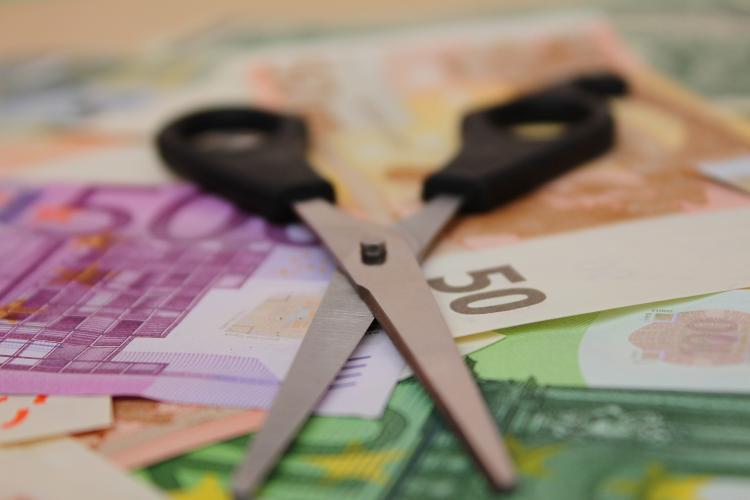
The decision of the Monetary Policy Committee (MPC) earlier this month to institute a new instrument called the Standing Deposit Facility (SDF) as the floor in the Liquidity Adjustment Facility (LAF) corridor is a significant milestone. The SDF as a liquidity management instrument was recommended by the ‘Expert Committee to Revise and Strengthen the Monetary Policy Framework’ (Chairman Dr. Urjit R. Patel) in January 2014. In 2018, the Section 17 of the RBI Act, 1934, was amended to empower the RBI to introduce this instrument, which has now been launched in 2022. Thus, it took nearly eight years to bring SDF to life.
SDF is designed to absorb surplus liquidity which is transient in nature reflected in the increase in deposits of the government with the RBI. This surplus liquidity is primarily on account of an increase in advance tax receipts, sudden increase in public provident funds and small savings receipts and temporary postponement of certain expenditure.
When the government is in surplus as explained, the market will be in deficit. On the side, the market will be in surplus when deposits of the government with the RBI are reduced with increased expenditure and/or reduction in receipts. The government in this case takes recourse to monetary accommodation from the RBI (Currently, the government takes 'Ways and Means Advances' or WMA with maturity of 91 days with an interest rate of 4 per cent). Thus, in the end, WMA results in transient surplus liquidity. [THIS WAS ADDED LATER AS A CLARIFICATORY PARA- EDITOR]
With this, the fixed-rate overnight reverse repo has ceased to be the floor of the LAF corridor. However, the reverse repo continues to remain in the toolkit of the RBI as a monetary policy instrument and its operation will be at the discretion of the RBI for purposes specified from time to time.
SDF as it stands currently has the following features viz; (a) it is the floor of the LAF corridor, replacing the hitherto fixed rate reverse repo; (b) it is a monetary policy instrument to absorb liquidity without any collateral (collaterals in this case are normally government securities ) with an interest rate of 3,75 per cent; (c) it is operated on an overnight basis, with the flexibility to absorb liquidity for longer tenor with appropriate pricing; (d) deposits under the SDF shall not be reckoned as balances eligible for the maintenance of the cash reserve ratio (CRR) under Section 42 of the RBI Act, 1934, but shall be an eligible asset for maintenance of the statutory liquidity ratio (SLR) under Section 24 of the Banking Regulation Act, 1949.
SDF can absorb surplus liquidity which is transient in nature. As a non-collaterised instrument, it can absorb large volumes
The introduction of SDF raises some key questions: (a) How will it absorb the liquidity (both transient and durable)? (b) How will it impact the balance sheet of RBI? (c) What will happen to other instruments of RBI such as Open Market Operations (OMO) and the Market Stabilisation Scheme (MSS)? (d) What truly are the benefits of SDF?
SDF is designed to absorb surplus liquidity which is transient in nature reflected in the increase in deposits of the government with the RBI. This surplus liquidity is primarily on account of an increase in advance tax receipts, sudden increase in public provident funds and small savings receipts and temporary postponement of certain expenditure. The durable liquidity is in terms of net capital flows either in the form of equity such as FDI or debt such as ECB, NRI deposits and trade credit. Besides, the foreign portfolio investment (FPI) which are known as “hot money” both in in terms of investment in equity and debt also contribute to durable liquidity. SDF being a non-collateralised instrument gives the flexibility for surplus liquidity management of larger magnitude as it removes the “binding constraint” on RBI to possess government securities in its balance sheet.
With the introduction of the SDF at 3.75 per cent, the policy repo rate being at 4.00 per cent and the Marginal Standing Facility (MSF rate) at 4.25 per cent, the width of the LAF corridor is restored to its pre-pandemic arrangement of 50 bps. Thus, the LAF corridor will be symmetric around the policy repo rate with the MSF rate as the ceiling and the SDF rate as the floor.
SDF will form the assets of the RBI. This aspect is explained in terms of the composition and sources of Reserve Money (RM). According to the RBI Annual Report 2021, RM is a “stylized depiction of the Reserve bank’s balance sheet”. Furthermore, it focuses on “moneyness”, technically implying the characteristics of an asset to convert readily into liquidity at a low or zero transaction cost. The components of RM comprising mainly currency-in-circulation (C-i-C) and deposits of banks (deposit for maintenance of CRR) represent the liability side of the balance sheet whereas the asset side mainly represents net RBI credit to government (currently Ways and Means Advances or WMA), Net Foreign Currency Assets and credit to commercial sector and banks. SDF will form a part of RBI net claims on banks.
It may be mentioned that following a change in accounting practice w.e.f July 11, 2014, liquidity operations (repo, term repo and MSF) net of reverse repo/term reverse repo are being treated as loans and advances to banks and commercial sector instead of the earlier treatment of sale/ purchase of securities.
There will be two entries in the balance sheet – one on the liability side (C-in-C) and another on the assets side (net claims on banks). In that sense, the impact on the RBI balance sheet is nil. For example, in a hypothetical case, if SDF is Rs.100 crore, it sits on the assets side under the RBI net claims on banks and on the liability side C-i-C will be reduced by Rs.100 crore.
To the extent the onus is on the bank to deposit surplus liquidity, it will ensure efficient cash management of the bank
Once SDF is stabilised as a monetary policy instrument to absorb both transient and durable liquidity, there will be less pressure on MSS. As recommended by the Urjit Patel committee, dependence on MSS and cash management bills (CMBs) may be phased out, consistent with Government debt and cash management being taken over by the Government’s Debt Management Office (DMO). Thus, SDF becomes a truly monetary policy instrument. The RBI Governor in his press conference of April 08 2022 in this context has mentioned that SDF would enable RBI to sterilise liquidity, if there is an excess build-up due to various reasons, and do so without the constraint of collaterals.
With the introduction of the SDF at 3.75 per cent, the policy repo rate being at 4.00 per cent and the Marginal Standing Facility (MSF rate) at 4.25 per cent, the width of the LAF corridor is restored to its pre-pandemic arrangement of 50 bps. Thus, the LAF corridor will be symmetric around the policy repo rate with the MSF rate as the ceiling and the SDF rate as the floor.
In the end, by removing the binding collateral constraint on the RBI, the SDF strengthens the operating framework of monetary policy.
As SDF is a non- collateral open-ended instrument, banks could have some arbitrage opportunity to deploy surplus liquidity with RBI with an overnight rate of 3.75 per cent rather than going for risks in lending to private sector.
As the RBI Governor mentioned: “Accordingly, access to SDF and MSF will be at the discretion of banks, unlike repo/reverse repo, OMO and CRR, which are available at the discretion of the Reserve Bank. Notably, the SDF is also a financial stability tool in addition to its role in liquidity management.”
To the extent the onus is on the bank to deposit surplus liquidity, it will ensure efficient cash management of the bank.
There are, however, a few downsides, too. As SDF is a non- collateral open-ended instrument, banks could have some arbitrage opportunity to deploy surplus liquidity with RBI with an overnight rate of 3.75 per cent rather than going for risks in lending to private sector. Moreover, in times of large capital net inflows, use of SDF to absorb durable liquidity should be supplemented with market related instruments like OMO, MSS and CMBs. These instruments should not be supplanted with the institution of SDF, as recommended by the Urjit Patel Committee. This will be in the best interests of monetary and fiscal coordination because only then will liquidity management operations, particularly in relation to large amounts in terms of durable liquidity, be in alignment with market conditions.
(The writer is a former central banker and a faculty member at SPJIMR. Views are personal)







